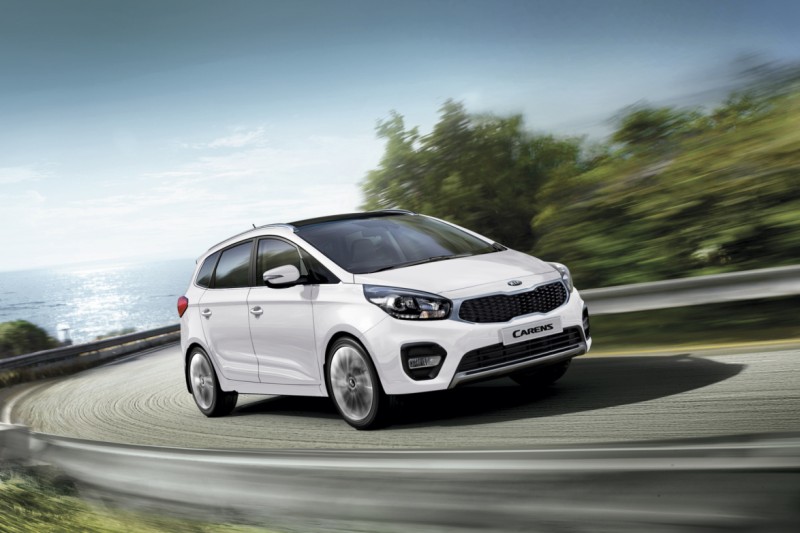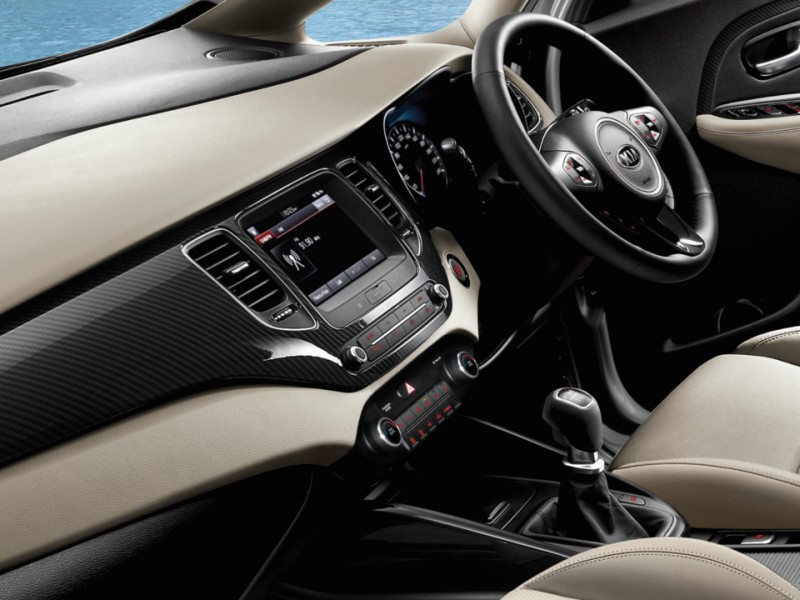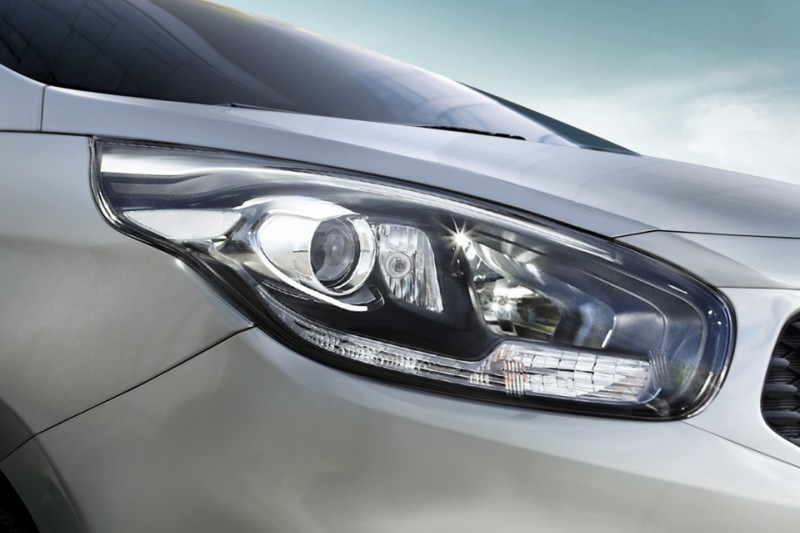The Kia Carens is a seven-seater people-mover disguised as a premium hatchback. Here’s why you should pay attention.
India, as a market, has people wanting more from less. That about sums up everything from power and economy, to quality and price. With the people-carrier space vastly lacking in credible offerings department, there is room for someone who has a complete package, which doesn’t compromise on safety or equipment, to take it by storm.
Hyundai have been on a roll here in India, with increasingly capable offerings across all price-tags. From the Santro in 1998, to the Grand i10 of today, they’ve come a long way indeed. However, what they’re missing, is a seven-seat contender in the volume segment. And that’s where the Carens, from the Korean major’s economy brand Kia, comes in.
Kia have already announced their entry into India. They have mentioned as many as three made-in-India cars that will form the bread-and-butter, as well as their double-omelette-bun-maska–chai, car lines here in India. The brand became more popular after a certain hit auto programme aired on BBC2 announced the Kia “cee apostrophe d” as their “reasonably priced car” from a pool that spanned several big names. A sign of things to come?
The Kia Carens is on sale in the UK from £19,300 (Rs 16.4 lakh). Let’s not forget that the price is inclusive of mandatory safety features including six airbags, ABS, and traction control. Strip out those to meet our budding safety standards, and the price will come tumbling down. For reference, the Hyundai (Elite) i20 starts from £9,995 (Rs 8.5 lakh) for the base version, which, in India, is priced at Rs 5.3 lakh – 37.5 per cent lower. That puts the Carens’ starting price, by mere calculation, at just over Rs 10 lakh. So, what do you get for those 10 lakh, or one million rupees?
The Carens is a right-hand-drive, seven-seater that offers a choice of modern equipment as well as immense flexibility. Want to know what the base model offers? Here’s the list: air-conditioning, all-round power windows with auto up and down function, electrically-adjustable and heated door mirrors, Bluetooth with voice recognition and music streaming, USB and AUX ports, cruise control with speed limiter, flex steer (Normal, Comfort, and Sport modes), Electronic Stability Control (ESC), Vehicle Stability Management (VSM), projector headlamps, with levelling, cornering lights, and LED daytime running lights, rear wiper with washer, body-coloured mirrors, door-handles, and bumpers, and 16-inch alloy wheels. And that’s the base model in the UK.
The top-end car has auto park, a reversing camera, a panoramic sunroof, 17-inch alloy wheels, a 10-way adjustable driver’s seat, and an eight-inch touchscreen, among other things. Other things which can be mixed and matched for a vehicle portfolio in India. Especially one meant for seven passengers. Take away the heating, cruise control, ESC, VSM, flex steer, and some inconspicuous goodies and the price tag will fall from Rs 10 lakh to well below Rs 8 lakh. Seems interesting now, doesn’t it?
Then, there are the powertrain choices. The UK models get a 1.6-litre petrol and 1.7-litre turbo-diesel. That’s the same as the Hyundai Elantra in some global markets. However, here in India, as the new Verna has demonstrated, we can have a pair of 1.6-litre petrol and diesel engines. Over 120 PS is far more than what is needed for everyday, even highway, use.
The Kia Carens measures 4,525 mm long, 1,805 mm wide, 1,605 mm high, and runs a 2,750 mm wheelbase. It can seat seven, or offer up to 1,650 litres of boot volume. Priced competitively, it would take the fight to the Maruti Suzuki Ertiga, Renault Lodgy, and Honda BR-V, let alone some bare-bones basic offerings that wouldn’t cut it in the Euro NCAP safety tests.
We say, bring it on, Kia. And get the pro_cee’d and Stinger GT while you’re at it.
Story: Jim Gorde
























Leave a Reply